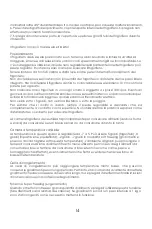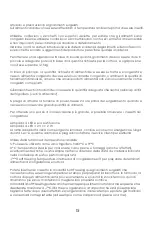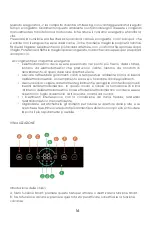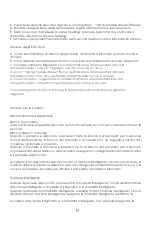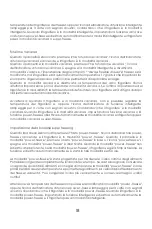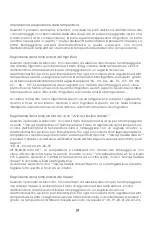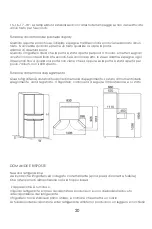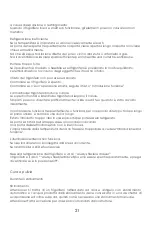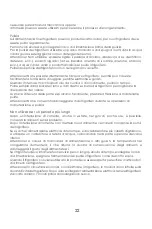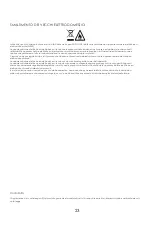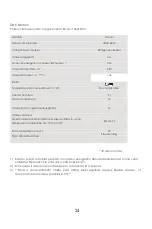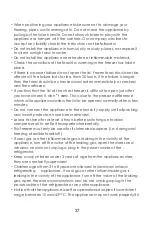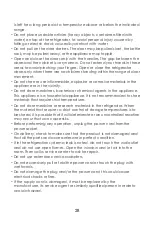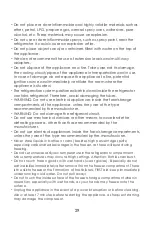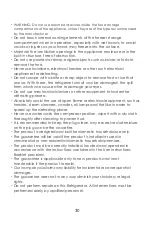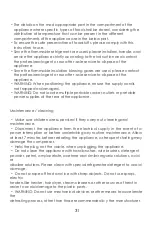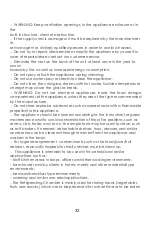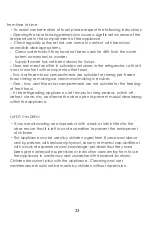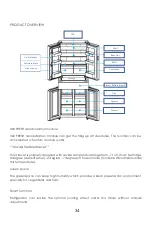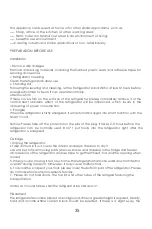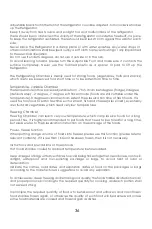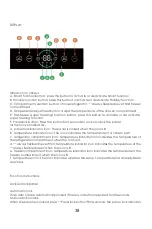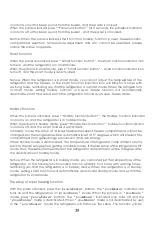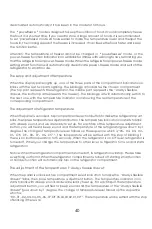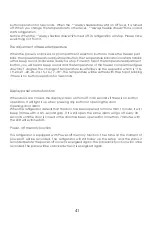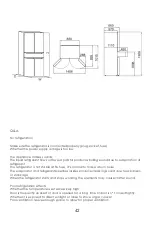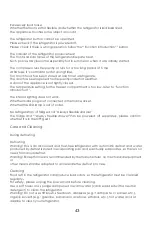
28
is left for a long period at a temperature above or below the indicated
range.
·
Do not place unstable articles (heavy objects, containers filled with
water) on top of the refrigerator, to avoid personal injury caused by
falling or electric shock caused by contact with water.
·
Do not pull on the door shelves. The door may be pulled slant, the bottle
rack, may be pulled away, or the appliance may topple.
·
Open and close the doors only with the handles. The gap between the
doors and the cabinet is very narrow. Do not extend your hands in these
areas to avoid pinching your fingers. Open or close the refrigerator
doors only when there are no children standing within the range of door
movement.
·
Do not store or use inflammable, explosive or corrosive materials in the
appliance or in the vicinity.
·
Do not store medicines, bacteria or chemical agents in the appliance.
This appliance is a household appliance. It is not recommended to store
materials that require strict temperatures.
·
Do not store medicine or research materials in the refrigerator. When
the material that requires a strict control of storage temperatures is to
be stored, it is possible that it will deteriorate or an uncontrolled reaction
may occur that can cause risks.
·
Before performing any operation, unplug the power cord from the
power socket.
·
On delivery, check to make sure that the product is not damaged and
that all the parts and accessories are in perfect condition.
·
If in the refrigeration system a leak is noted, do not touch the wall outlet
and do not use open flames. Open the window and le t air into the
room. Then call a service center to ask for repair.
·
Do not use extension cords or adapters.
·
Do not excessively pull or fold the power cord or touch the plug with
wet hands.
·
Do not damage the plug and/or the power cord; this could cause
electrical shocks or fires.
·
If the supply cord is damaged, it must be replaced by the
manufacturer, its service agent or similarly qualified person in order to
avoid a hazard.

